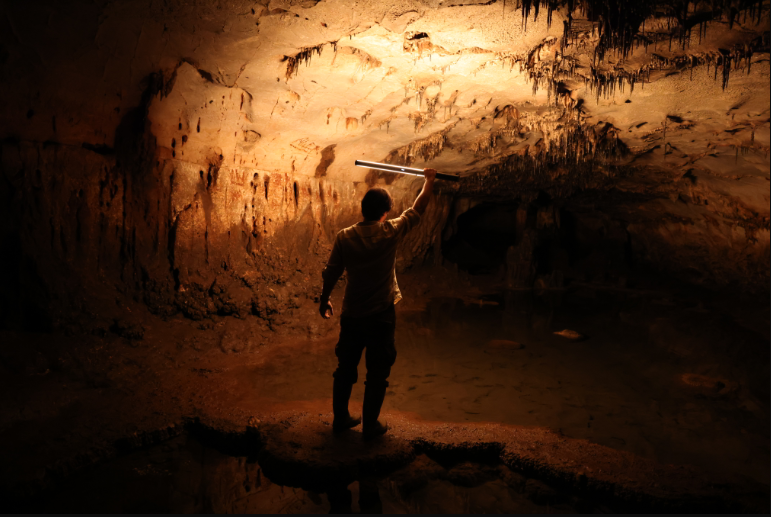In a significant archaeological find, researchers have uncovered a vast Palaeolithic cave art site, potentially the most significant ever found on the Eastern Iberian Coast in Europe.
This remarkable discovery consists of over a hundred ancient paintings and engravings, believed to date back at least 24,000 years, located within a 500-meter-long cave known as "Cova Dones" or "Cueva Dones."
Situated in Millares near Valencia, Spain, the cave has been a familiar spot for locals and enthusiasts, yet the existence of Palaeolithic artworks went unnoticed until experts from the universities of Zaragoza and Alicante (Spain), affiliated with Archaeology at the University of Southampton (UK), made the remarkable revelation in June 2021.

Palaeolithic Cave Art Site in Spain
Dr. Aitor Ruiz-Redondo, Senior Lecturer of Prehistory at the University of Zaragoza (Spain) and a research affiliate at the University of Southampton (UK), commented on the significance of this finding.
He said, "When we saw the first painted auroch [extinct wild bull], we immediately acknowledged it was important. Although Spain is the country with the largest number of Palaeolithic cave art sites, most of them are concentrated in northern Spain. Eastern Iberia is an area where few of these sites have been documented so far."
He further noted that the true magnitude of its importance only became fully apparent after they conducted a thorough and systematic survey. It became evident that they were dealing with a major cave art site, comparable to those found in regions like Cantabrian Spain, southern France, or Andalusia, but conspicuously absent in this territory.
The collaborative research team, consisting of Dr. Virginia Barciela-González, Senior Lecturer of Prehistory at the University of Alicante (Spain), and Dr. Ximo Martorell-Briz, a research affiliate at the University of Alicante (Spain), have meticulously documented over a hundred unique "motifs" or designs within Cova Dones thus far.
According to the archaeologists, the sheer number of motifs and the diverse techniques employed in their creation elevate this cave to the status of being the most significant Palaeolithic cave art site along the eastern Mediterranean coast of the Iberian Peninsula.
This discovery rivals, and perhaps surpasses, even the renowned Atxurra site in Bizkaia, discovered in 2015, in terms of the sheer number of motifs.
Ancient Animal Representations
The research brings to light a minimum of 19 confirmed animal representations featuring creatures like hinds, horses, aurochs, and deer. What sets this discovery apart is the predominant use of clay in creating these paintings.
Ruiz-Redondo explained the process, saying that animals and signs "were depicted simply by dragging the fingers and palms covered with clay on the walls."
He added that the "humid environment of the cave did the rest: the 'paintings' dried quite slowly, preventing parts of the clay from falling down rapidly, while other parts were covered by calcite layers, which preserved them until today."
While the application of clay in Palaeolithic art is known, instances of its use or preservation are rare. Yet, in Cueva Dones, it emerges as the primary technique employed.
However, it must be noted that the team's investigations are still in the nascent stages, with many areas yet to be surveyed and numerous panels awaiting documentation.
This means that more art could come to light in the future. The findings were recently published in the journal Antiquity.

ⓒ 2025 TECHTIMES.com All rights reserved. Do not reproduce without permission.




